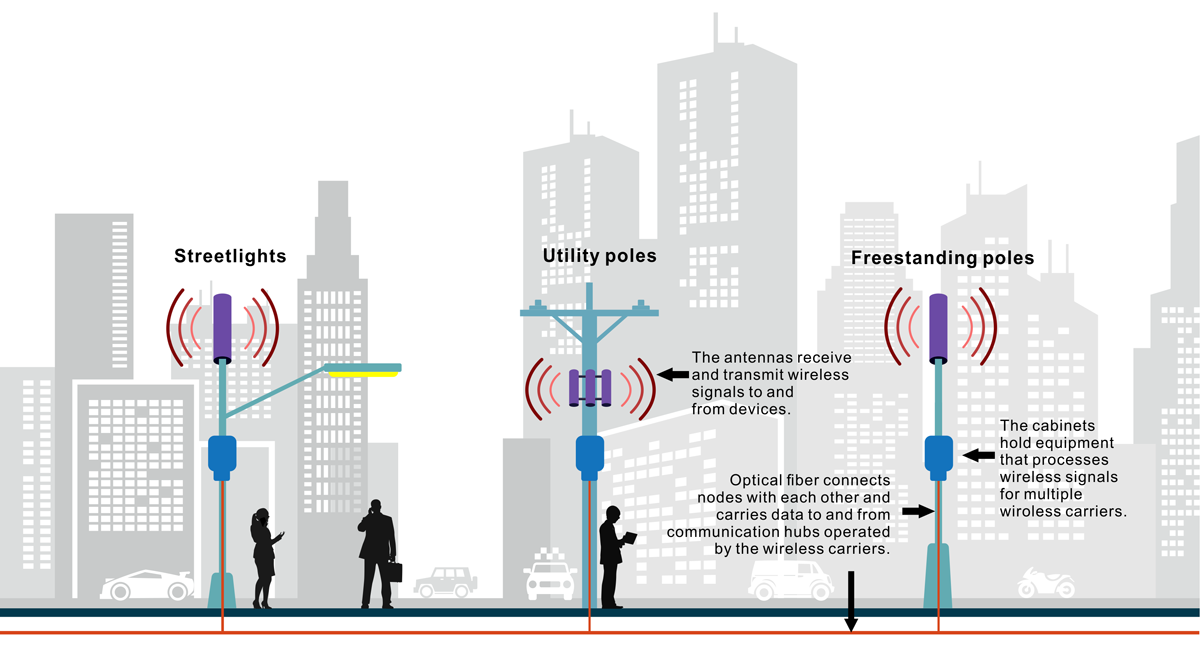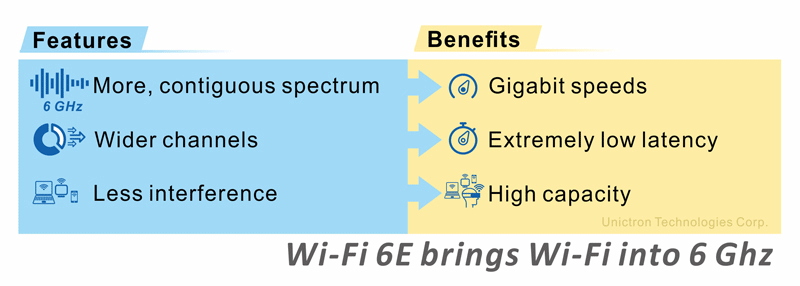WiFi 6E
WI-FE 6 and WI-FE 6E
According to the wireless communications protocols, the IEEE 802.11 ac standard (Wi-Fi 5) only functions on the 5 GHz band, while Wi-Fi 6 (IEEE 802.11 ax) incorporates both the 2.4 GHz and the 5 GHz frequency bands. As the number of wireless devices continues to grow, congestion in both of these bands will not ease up but continue to impact both Wi-Fi speed and bandwidth, which inevitably compromises the quality of user experience.
In order to tackle this problem, in April 2020, the FCC ( U.S. Federal Communications Commission) voted in favor of the proposal to open the 6 GHz band, so as not to authorize the frequency band as an extension of Wi-Fi 6, WI-FI 6E was born, E stands for Extend-expansion, opening a new 6GHz band (5.925 GHz to 7.125 GHz), widening the original WI-FI 6 band by 1.2 GHz, increasing network capacity by at least double, and greatly reducing connection congestion. It also reduces the signal interference issue of 2.4GHz and 5GHz, and the 6GHz band is much clearer than the 2.4GHz and 5GHz bands, and has not been occupied by other wireless devices; therefore, the network transmission can be smoother.
Status of WI-FI 6E
As for now, when it comes to the use of WI-FI 6E frequency bands on a global scale, majority of countries have opened the UNII-5 frequency band (5.945-6.425 GHz), while a few countries, such as the United States and South Korea, have opened the full 6GHz frequency band (5.925 GHz – 7.125 GHz).
The applicable fields of WI-FI 6E include: home WI-FI networks, virtual reality (VR), augmented reality (AR), smart factories, etc. With the development of terminal applications and the Internet of Things, more countries and As regions open up the 6 GHz frequency band, there will be more and more demand for products that support Wi-Fi 6E, and related practical applications will also be discovered and developed rapidly.
Why Choose Unictron Technology/ PCB Antenna from Unictron
Even though, Wi-Fi 6E fulfills the needs for speed, higher data rates and lower latency, instant communication, and better performance in congested environments, it still hinders the process of optimizing antenna performance.
Successful implementations of Wi-Fi 6E require a higher degree of integration of devices, access points and other parts of the system, because every part of the system is interrelated and affects each other. Wi-Fi 6E’s more stringent radio frequency (RF) specifications mean that all aspects of RF system design and antenna optimization will become more complex. Due to increased complexity and higher expectations for Wi-Fi 6E performance, antenna designs must meet these higher levels of requirements for optimal performance.
Challenges in Wi-Fi 6E antenna performance optimization include:
- The need for multiple antennas with broader bandwidth.
- The increasingly-smaller dimensions of the enclosure of wireless devices with limited space for antenna installation.
- Antennas with various designs and processing technologies may co-exist inside a single device enclosure.
As an advanced contributor and pioneer in the field of antennas, Unictron’s R&D team has extensive experience in collaborating with customers to develop and design Wi-Fi antennas in their RF devices. We offer an extensive antenna product line for Wi-Fi applications, including patented TELA chip antenna, PCB/FPC antenna and LDS antenna. Among them, the patented Pillar antenna is a high-performance chip antenna that can be easily installed anywhere on the circuit board without the limitation of ground clearance requirements. For Wi-Fi 6E applications, whether it is a cylindrical chip antenna or a PCB antenna, Unictron has a unique and comprehensive antenna solution!



